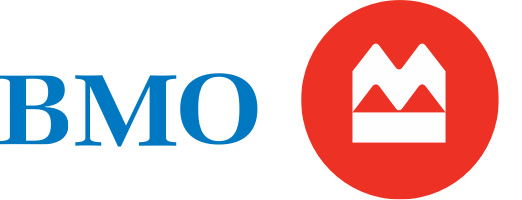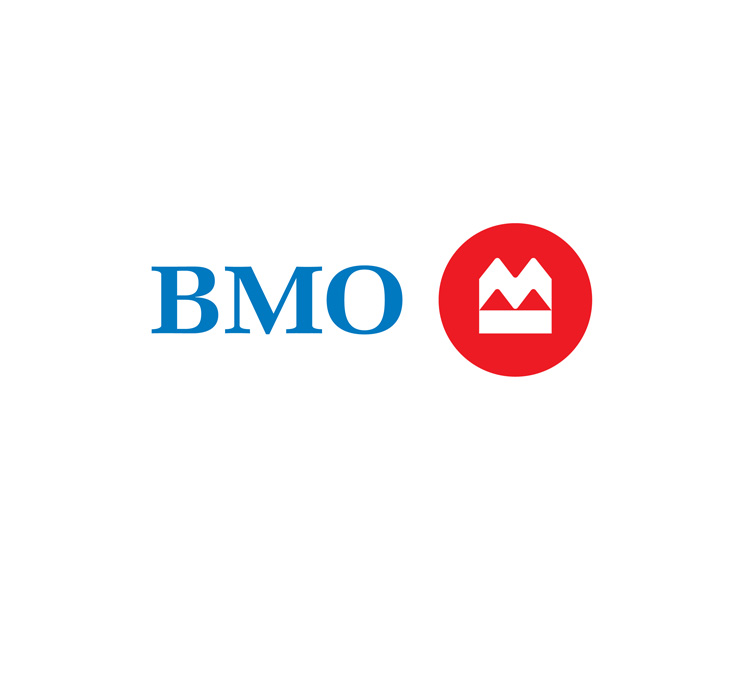
Canadian Existing Home Sales (Jan.) — Waiting for Spring
-
bookmark
-
print

- Keywords:


Canadian existing home sales rose 3.7% in January (seasonally adjusted) and were up a hefty 22.0% from the same month last year. Activity has firmed, but part of the big gain is the result of an easy year-ago comparison (when activity was in the pit of the correction). It’s also worth reminding that this is Canada: we have winter, and it can be variable and messy. Activity in the December/January period is the least liquid of the year, with sales usually running well below half of peak spring volumes. So we’ll really need to see how the numbers start to look in March and beyond. So far, there remain encouraging signs that the market has troughed alongside improved sentiment and some lower fixed mortgage rates—and there is pent-up demand on the sidelines.
New listings rose a more modest 1.5% in January and were up a 10.5% y/y. This has allowed the sales-to-new listings ratio to rise further to 58.8%, which just happens to be bang on the 10- and 20-year medians. In other words, we’re almost seeing a perfectly balanced resale market again when looking at the aggregate Canadian numbers. Regionally, there is variation of course, with the Prairies (especially Calgary) boasting sellers’ markets, while a scattering of smaller Southern Ontario cities remain relatively soft (although tightening from last fall). Cottage country in Ontario and B.C. also remains very soggy (though this is far from peak season). The big cities look relatively balanced again, with Vancouver, Toronto and Montreal carrying neutral sales-to-new listings ratios. Again, with spring also comes more listings, so we’ll need to see how much pent-up demand is waiting to swallow up (or not) the flow that will be coming in the next few months. But the starting point for the market is at least well balanced.
Prices continue to fall across a number of markets, with the MLS benchmark Canadian price down 1.2% in January, or 13.8% annualized, consistent with moves seen since October. Perhaps the market is clearing better because sellers are more willingly relenting on price. That leaves prices up just 0.4% from a year ago. The average transactions price was up 7.6% y/y in January. At 10% y/y, Calgary is posting the strongest price numbers among the larger cities, Vancouver and Montreal are in the low-single digits, Toronto is flat, and parts of Southern Ontario are down. Many of those latter markets are still seeing prices at cycle lows.
The Bottom Line: The Canadian housing market looks balanced overall, but keep in mind that this is the depth of winter. We’ll see how pent-up demand and more listings interact once spring breaks. For now, market sentiment has been buoyed by the prospect of Bank of Canada rate cuts and helped by a drop in fixed mortgage rates. That said, market pricing for Bank of Canada easing continues to get pushed out (we believe around mid-year, not in time for the spring market), while 5-year GoC yields have quietly risen by more than 50 bps since the start of the year.
Bonus: If you missed it, our 2024 housing market outlook can be found here.![]()
Robert has been with the Bank of Montreal since 2006. He plays a key role in analyzing economic, fiscal and real estate trends in Canada. Robert regularly contribut…(..)
View Full Profile >Canadian existing home sales rose 3.7% in January (seasonally adjusted) and were up a hefty 22.0% from the same month last year. Activity has firmed, but part of the big gain is the result of an easy year-ago comparison (when activity was in the pit of the correction). It’s also worth reminding that this is Canada: we have winter, and it can be variable and messy. Activity in the December/January period is the least liquid of the year, with sales usually running well below half of peak spring volumes. So we’ll really need to see how the numbers start to look in March and beyond. So far, there remain encouraging signs that the market has troughed alongside improved sentiment and some lower fixed mortgage rates—and there is pent-up demand on the sidelines.
New listings rose a more modest 1.5% in January and were up a 10.5% y/y. This has allowed the sales-to-new listings ratio to rise further to 58.8%, which just happens to be bang on the 10- and 20-year medians. In other words, we’re almost seeing a perfectly balanced resale market again when looking at the aggregate Canadian numbers. Regionally, there is variation of course, with the Prairies (especially Calgary) boasting sellers’ markets, while a scattering of smaller Southern Ontario cities remain relatively soft (although tightening from last fall). Cottage country in Ontario and B.C. also remains very soggy (though this is far from peak season). The big cities look relatively balanced again, with Vancouver, Toronto and Montreal carrying neutral sales-to-new listings ratios. Again, with spring also comes more listings, so we’ll need to see how much pent-up demand is waiting to swallow up (or not) the flow that will be coming in the next few months. But the starting point for the market is at least well balanced.
Prices continue to fall across a number of markets, with the MLS benchmark Canadian price down 1.2% in January, or 13.8% annualized, consistent with moves seen since October. Perhaps the market is clearing better because sellers are more willingly relenting on price. That leaves prices up just 0.4% from a year ago. The average transactions price was up 7.6% y/y in January. At 10% y/y, Calgary is posting the strongest price numbers among the larger cities, Vancouver and Montreal are in the low-single digits, Toronto is flat, and parts of Southern Ontario are down. Many of those latter markets are still seeing prices at cycle lows.
The Bottom Line: The Canadian housing market looks balanced overall, but keep in mind that this is the depth of winter. We’ll see how pent-up demand and more listings interact once spring breaks. For now, market sentiment has been buoyed by the prospect of Bank of Canada rate cuts and helped by a drop in fixed mortgage rates. That said, market pricing for Bank of Canada easing continues to get pushed out (we believe around mid-year, not in time for the spring market), while 5-year GoC yields have quietly risen by more than 50 bps since the start of the year.
Bonus: If you missed it, our 2024 housing market outlook can be found here.![]()
What to Read Next.
BMO Partners with Canada Infrastructure Bank to Help Canadian Clients Finance Energy Retrofits in a Sustainable Finance First
January 24, 2024 | Commercial Real Estate

BMO has launched a program to help Canadian clients who are commercial building owners get the financing they need to execute energy retrofits at the…
Continue Reading>Related Insights
Tell us three simple things to
customize your experience






Banking products are subject to approval and are provided in Canada by Bank of Montreal, a CDIC Member.
BMO Commercial Bank is a trade name used in Canada by Bank of Montreal, a CDIC member.
Please note important disclosures for content produced by BMO Capital Markets. BMO Capital Markets Regulatory | BMOCMC Fixed Income Commentary Disclosure | BMOCMC FICC Macro Strategy Commentary Disclosure | Research Disclosure Statements
BMO Capital Markets is a trade name used by BMO Financial Group for the wholesale banking businesses of Bank of Montreal, BMO Bank N.A. (member FDIC), Bank of Montreal Europe p.l.c., and Bank of Montreal (China) Co. Ltd, the institutional broker dealer business of BMO Capital Markets Corp. (Member FINRA and SIPC) and the agency broker dealer business of Clearpool Execution Services, LLC (Member FINRA and SIPC) in the U.S. , and the institutional broker dealer businesses of BMO Nesbitt Burns Inc. (Member Canadian Investment Regulatory Organization and Member Canadian Investor Protection Fund) in Canada and Asia, Bank of Montreal Europe p.l.c. (authorised and regulated by the Central Bank of Ireland) in Europe and BMO Capital Markets Limited (authorised and regulated by the Financial Conduct Authority) in the UK and Australia and carbon credit origination, sustainability advisory services and environmental solutions provided by Bank of Montreal, BMO Radicle Inc., and Carbon Farmers Australia Pty Ltd. (ACN 136 799 221 AFSL 430135) in Australia. "Nesbitt Burns" is a registered trademark of BMO Nesbitt Burns Inc, used under license. "BMO Capital Markets" is a trademark of Bank of Montreal, used under license. "BMO (M-Bar roundel symbol)" is a registered trademark of Bank of Montreal, used under license.
® Registered trademark of Bank of Montreal in the United States, Canada and elsewhere.
™ Trademark of Bank of Montreal in the United States and Canada.
The material contained in articles posted on this website is intended as a general market commentary. The opinions, estimates and projections, if any, contained in these articles are those of the authors and may differ from those of other BMO Commercial Bank employees and affiliates. BMO Commercial Bank endeavors to ensure that the contents have been compiled or derived from sources that it believes to be reliable and which it believes contain information and opinions which are accurate and complete. However, the authors and BMO Commercial Bank take no responsibility for any errors or omissions and do not guarantee their accuracy or completeness. These articles are for informational purposes only.
Bank of Montreal and its affiliates do not provide tax, legal or accounting advice. This material has been prepared for informational purposes only, and is not intended to provide, and should not be relied on for, tax, legal or accounting advice. You should consult your own tax, legal and accounting advisors before engaging in any transaction.
Third party web sites may have privacy and security policies different from BMO. Links to other web sites do not imply the endorsement or approval of such web sites. Please review the privacy and security policies of web sites reached through links from BMO web sites.
Please note important disclosures for content produced by BMO Capital Markets. BMO Capital Markets Regulatory | BMOCMC Fixed Income Commentary Disclosure | BMOCMC FICC Macro Strategy Commentary Disclosure | Research Disclosure Statements





